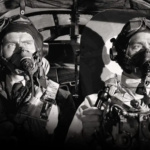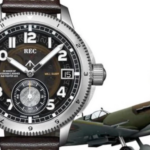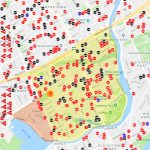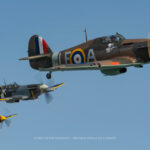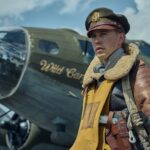Lieven Vandecaveye teaches mechanics at the Free Technical Institute in Torhout (Vrij Technisch Instituut Torhout, VTI) in the Flemish part of Belgium, 10 miles from Bruges and 23 miles from Ypres. He is an amateur historian with a great interest in both World Wars and is author of the book In Flanders Heaven, about the WWI airfield Flugplatz Wingene which was home to German aces including Ernst Udet, Josef Jacobs, Karl Menckhof and Karl Degelow. In 2023 he supervised a group of VTI students who, after learning the story of two Royal New Zealand Air Force (RNZAF) pilots killed on operations and buried in their town, were inspired to create a memorial to the fallen aviators.
By Lieven Vandecaveye
In our school, students aged 14 to 18 take classes including take electricity, woodworking, auto mechanics and mechanics. Over their four years students of the mechanics department learn bending, turning, milling, welding and everything related to theoretical mechanics. Our workshop is very well equipped and we have some CNC machines.
Every year on Armistice Day, we visit a WWI German and British military cemetery in Ypres and lay a wreath under the Menin Gate. Last year during the trip a student, Bjorn Willems, asked why two New Zealand pilots are buried in his hometown of Eernegem. Stimulated by this question, we did research on the Internet and came upon the story of Flight Officers Ronald Lavender Baker and John Gordon Thomson.
On Wednesday, October 20th, 1943 at 9.05 am, 12 Spitfires of 485 (NZ) Squadron RAF departed from their base at Hornchurch in the UK for a sweep mission. The purpose of this mission, code-named Rodeo 263, was an attack flight over French Vitry and Lille, targeting ground targets and strategic points. The formation, minus Flight Sergeant Frehner who had to return with engine trouble, reached the Belgian coast north-west of Veurne around 9.30 am, and 15 minutes later they flew over Ostend and climbed from 10,000 to 20,000 feet. The formation swung north and was attacked from below by four Focke-Wulf Fw 190s and Flying Officer Transom’s Spitfire received a direct hit in the engine, and he too was ordered to fly back to home base.
Flight Lieutenant Gaskin and Flying Officers Baker and Thomson remained in the rear to fight the enemy aircraft while the other eight Spitfires continued their mission. Gaskin, callsign Blue One, found himself right behind a FW 190 and squeezed off a long burst, downing the enemy aircraft. Baker, Blue Two, flying his 204th combat mission, and Thomson, Blue Four, flying his 21st combat mission, continued to engage the enemy aircraft. The three Spitfires battled on against their German opponents: seconds became minutes and the engagement eventually broke off. Blue One, now alone, couldn’t get radio contact with his comrades. Having also lost sight with his section Blue One, now low on fuel, reluctantly turned and flew back to Hornchurch.
Blue Two and Blue Four – Baker and Thomson – never returned.
Weeks passed before news was received from the International Committee of the Red Cross that both Baker and Thomson were killed in air operations in the skies over Belgium, and their bodies laid to rest in the Parish Cemetery at Eerneghem, Belgium.
The VTI students could hardly imagine that two young men, barely a few years older than them, fought and died thousands of miles from home for our freedom. This story about the fate of these pilots so captured our imagination that we decided to build a scale model of a Spitfire in January 2023. After researching about this type of aircraft, 2D drawings were made with the drawing program Autocad. To convert these to 3 dimensional drawings we used the drawing program Solid Edge. The enthusiasm of the students while drawing grew and the highlight was the fabrication of the plane in metal. For this we had printed the drawings to scale and traced the outline, on steel plate.
Then everything was cut out with the band saw and filed and sanded to size and shape. The individual parts were welded together and when the plane was finally finished, all students were very proud of the result. There were no CNC machines used for the making of the model because the students were then in their fourth year and had only learned the basics of mechanics. Then they suggested, why not make a monument for the pilots?
After consulting with principal Stijn Debruyne, technical advisor-coordinator Miranda De Laere and technical advisor Gino Seys we decided to contact the municipality of Ichtegem/Eernegem to ask if they might be willing to cooperate with us. Upon invitation, Celesta Muylle of the Council for Heritage visited our workshop and was immediately enthusiastic about our idea. At the next council meeting, our proposal was approved and we received permission to begin construction. The city council apparently had great confidence in us because we were given a substantial budget with only one requirement: the monument had to be made of Cortenstaal, a steel that rusts only superficially and leaves no rust marks on concrete floors. It is widely used here for ornamental elements and flower boxes that are outdoors.
Designing was done by the students in September 2023. During our research, we had read of the restoration of Spitfire MJ444 on Vintage Aviation News. Especially the restoration of the fuselage and wings appealed to us and we decided to use this as the basis for our monument: a Spitfire of which only the frame can be seen, as a sign of impermanence. Supporting the planes with two arches gave the whole a dynamic form, and with the planes flying away from each other we want to show farewell. The arches are connected in the middle by bolts and this represents brotherhood. Once the design was completely finished, we began making the various parts in mid-October 2023.
The base of the monument is 10mm corten steel and the planes are 6mm corten steel. The different parts were carefully drawn and lasered out, then everything was welded together according to plan. Here we had to take into account the shrinkage and stretch that occurs when metal is heated. Meanwhile, the students were also milling and turning the fittings on the CNC machines. Each had his own task: Bjorn Willems and Wout Vandeghinste took care of the milling; the girls Laurien Snaet and Alanis Seys took care of the turning; and the welding was for Noah Cneut and Victor Pysson assisted by Lennert Verhelst from class 617.
During this project not only technical knowledge was gained but also the social aspect such as teamwork was important. Working together on one big piece instead of an individual piece of work brings about more than you would think. The students were sometimes more strict and critical of each other than we teachers were. Sometimes there was an argument or a discussion about what course of action to use but everything fell back into its fold. All the work was done during practical classes in our school and by the end of January the monument was completely finished.
[wbn_ads_google_three]
We would have liked to contact any relatives of the fallen pilots to give information about the construction of the monument. As this seemed an almost impossible task for us we contacted the moderator of the No 485 NZ Squadron RAF Facebook page, Wayne McCallum. He was amazed by our project and exhorted us to write to the New Zealand Embassy. He also sent us an original print of an air battle by No 485 NZ Squadron over the coast of Normandy, for which we are very grateful. To our surprise, the embassy staff responded and we were showered with praise by them as well. New Zealand Ambassador Diana Reaich promised to come to our unveiling at school in the company of Wing Commander Michael Parry of the RNZAF. We welcomed Mayor of Ichtegem Lieven Dossaert and Council for Heritage Celesta Muylle, as well as Acting Governor of West Flanders Koen Surdiacourt to our unveiling and reception.
Front row from left: Technical Advisor Gino Seys; Vice Principal Miranda Delaere; students Bjorn Willems, Wout Vandeghinste , Alanis Seys and Laurien Snaet; Principal Stijn Debruyne, [Photo via Lieven Vandecaveye]
It was a special day. Everyone was euphoric about the monument and the students were extensively flowered. The ambassador had brought several gifts for them and she herself received a paperweight with the logo of No 485 (NZ) Sqn RAF back. When Wing Commander Parry told the life story of both pilots, everyone was emotional.
We would still like to get in touch with any next of kin and give them a memento of this project. We also came up with the idea of laying a wreath at the National War Memorial of New Zealand in Wellington possibly with a visit to the Omaka Aviation Heritage Centre. But because the travel costs will be too high, it will probably remain just a dream.
The construction of the monument has left a deep impression on all of us, teachers and students. We never expected such an impact and feel proud to have been able to honor the two young men. The monument will be inaugurated on May 25 at the Eernegem cemetery. The mayor has promised to place an information board next to the monument on which the entire story of Flying Officer Baker and Flying Officer Thomson can be read.
Lest we forget and always remember their sacrifice.
Thanks to the management of VTI Torhout and the municipality of Ichtegem for their confidence in the project and the students. Finally, I proudly mention the names of the students from class 537/617 who participated in the project: Noah Cneut, Victor Pysson, Alanis Seys, Laurien Snaet, Wout Vandeghinste, Lennert Verhelst and Bjorn Willems.
[wbn_ads_google_four]







![Belgian Students Create Memorial to WWII RNZAF Pilots 9 Some of the students responsible for the memorial. Back row (from left) Victor Pysson, Lennert Verhelst, Wout Vandeghinste and Bjorn Willems. In front are Alanis Seys and Laurien Snaet. Absent is Noah Cneut. [Photo via Lieven Vandecaveye]](https://vintageaviationnews.com/wp-content/uploads/Belgian-Spitfire-monument-2-via-Lieven-Vandecaveye.jpg)

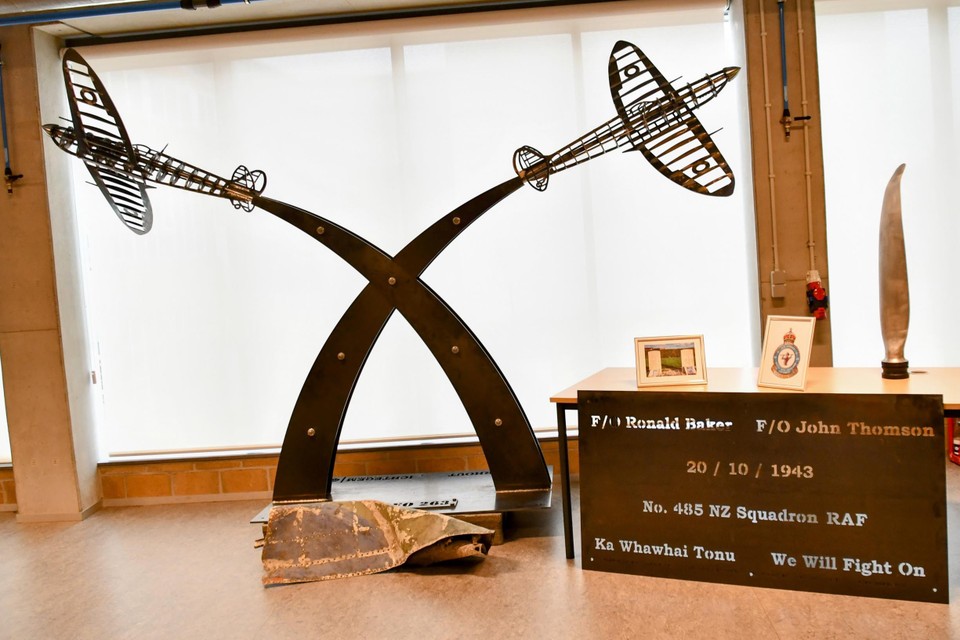
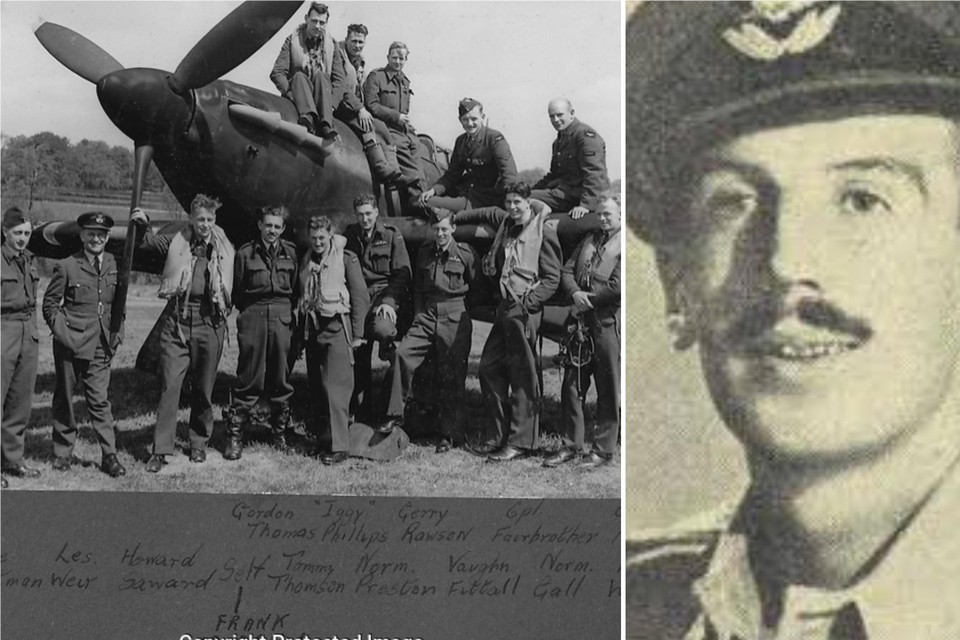
![Belgian Students Create Memorial to WWII RNZAF Pilots 12 A piece of one a Spitfire's wing was recovered however its origin has yet to be identified. [Photo by Lieven Vandecaveye]](https://vintageaviationnews.com/wp-content/uploads/Belgian-Spitfire-monument-13-via-Lieven-Vandecaveye.jpg.jpg-1024x683.jpg)
![Belgian Students Create Memorial to WWII RNZAF Pilots 13 The graves of Ronald Baker and John Thomson, which inspired the creation of the memorial. [Photo via Lieven Vandecaveye]](https://vintageaviationnews.com/wp-content/uploads/Belgian-Spitfire-monument-14-via-Lieven-Vandecaveye.jpg.jpg.jpg)
![Belgian Students Create Memorial to WWII RNZAF Pilots 14 The two Spitfire models before the memorial's assembly. [Photo via Lieven Vandecaveye]](https://vintageaviationnews.com/wp-content/uploads/Belgian-Spitfire-monument-5-via-Lieven-Vandecaveye-1024x922.jpg)
![Belgian Students Create Memorial to WWII RNZAF Pilots 15 The students responsible for the memorial. Back row (from left) Victor Pysson, Lennert Verhelst, Noah Cneut (obscured), Wout Vandeghinste and Bjorn Willems. In front are Alanis Seys and Laurien Snaet. [Photo via via Lieven Vandecaveye]](https://vintageaviationnews.com/wp-content/uploads/Belgian-Spitfire-monument-1-via-Lieven-Vandecaveye-768x1024.jpg)
![Belgian Students Create Memorial to WWII RNZAF Pilots 16 Wing Commander Michael Parry RNZAF addresses the audience during the memorial's unveiling at VTI Torhout. [Photo by Lieven Vandecaveye]](https://vintageaviationnews.com/wp-content/uploads/Belgian-Spitfire-monument-11-via-Lieven-Vandecaveye.jpg.jpg-1024x538.jpg)
![Belgian Students Create Memorial to WWII RNZAF Pilots 17 Back row from left: Willy Hoste and Cédric Curveraux (Ichtegem Council); Mayor of Ichtegem Lieven Dossaert; Celesta Muylle (Heritage Council of Ichtegem); Wing Commander Michael Parry RNZAF; NZ Ambassador Dianna Reaich; VTI students Lennert Verhelst, Noah Cneut and Victor Pysson; VTI teacher Lieven Vandecaveye; Acting Governor Koen Surdiacourt. Front row from left: Technical Advisor Gino Seys; Vice Principal Miranda Delaere; students Bjorn Willems, Wout Vandeghinste , Alanis Seys and Laurien Snaet; Principal Stijn Debruyne, [Photo via Lieven Vandecaveye]](https://vintageaviationnews.com/wp-content/uploads/Belgian-Spitfire-monument-9-via-Lieven-Vandecaveye-1024x535.jpg)
![Belgian Students Create Memorial to WWII RNZAF Pilots 18 A piece of one of the Spitfire's wings was displayed with the memorial during the unveiling, and those assembled placed poppies on the memorial in remembrance of Baker and Thomson. [Photo by Lieven Vandecaveye]](https://vintageaviationnews.com/wp-content/uploads/Belgian-Spitfire-monument-12-via-Lieven-Vandecaveye.jpg.jpg-768x1024.jpg)
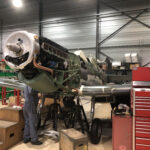
![Catch-22 Star B-25 Under Restoration in Belgium 11 TB-25N 44-30925 in the Belgian Aircraft Preservation Association’s workshop at Gembloux. [Photo courtesy BAPA]](https://vintageaviationnews.com/wp-content/uploads/BAPA-B-25-20230312-150x150.jpg)
